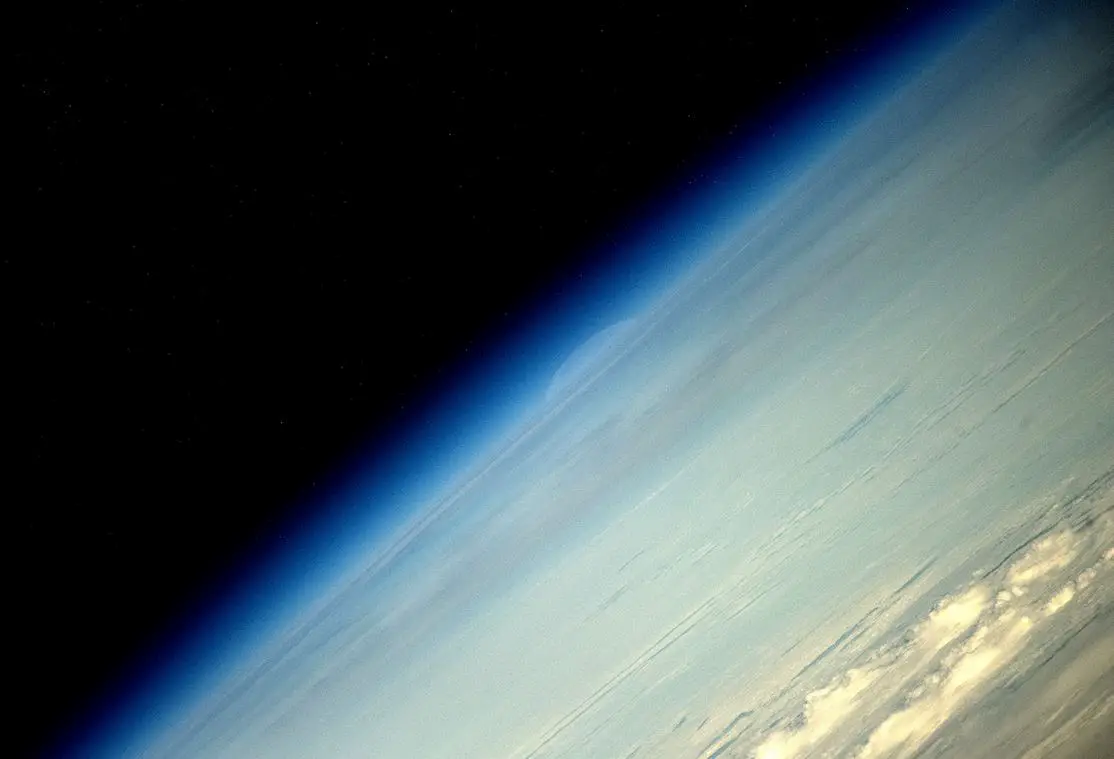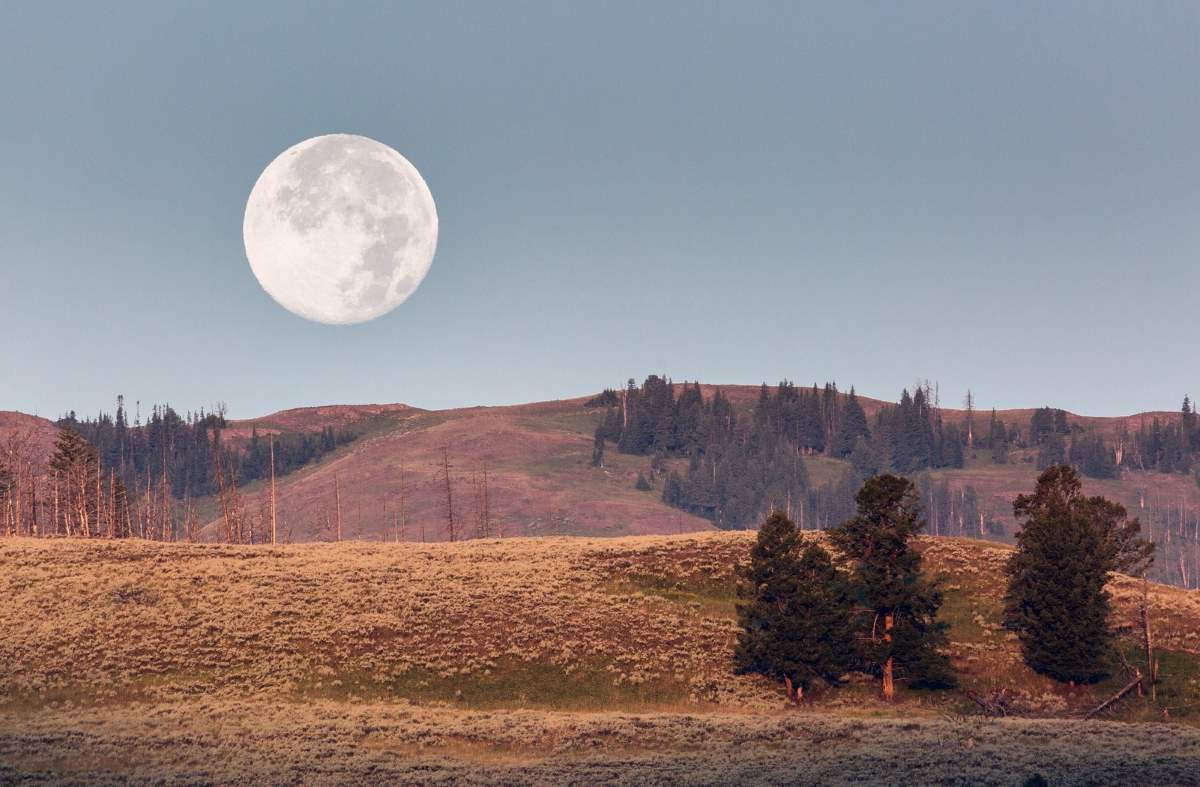The Moon follows an elliptic orbit around Earth. Naturally, sometimes it gets closer to the Earth than the other times. When it’s also full moon at its closest point to the Earth, it’s called Supermoon. As a result, the moon appears larger and brighter than usual in the sky.
The counterpart of a supermoon is called


Full moons can occur at any point along the Moon’s elliptical path, but when a full moon occurs at or near the perigee, it looks slightly larger and brighter than a typical full moon. That’s what the term “supermoon” refers to.
Here is a short video titled “What Makes a Supermoon Super?” published by NASA Jet Propulsion Laboratory (JPL) Edu.
Some interesting Supermoon facts
- According to NASA, a full moon at perigee (supermoon) is up to 14% larger and 30% brighter (phenomenon explained by the inverse square law.) than one at its farthest point, or apogee (micromoon).
- With a distance to Earth of 356,523 km, the November 14, 2016 supermoon was the closest one since January 26, 1948. On November 25, 2034, the Full Moon will be even closer to the Earth (356,448 km). No Supermoon will come that close until the given date (November 25, 2034).
- The term “supermoon” is not astronomical but originated in modern astrology. It was coined by astrologer Richard Nolle in 1979. The technical name of the phenomenon is the perigee-syzygy of the Earth-Moon-Sun system. Astronomers also call it as the perigean full moon.
- The association of the Moon with both oceanic and crustal tides has led to claims that the supermoon phenomenon may be associated with increased risk of events like earthquakes and volcanic eruptions, but there is no evidence of such a link.
- Leading up to a supermoon, there are often misleading images on popular media. A technique that involves using a long telephoto lens to take photographs of the Moon next to buildings or other objects makes the Moon look huge compared with its surroundings. This effect can make for great photographs, but it has nothing to do with the supermoon. In fact, these photos can be taken during any Moon phase, but they will likely be used in stories promoting the supermoon.
- During a supermoon, the Moon’s brightness can increase up to 30% (compared to micromoon) as a result of the Moon being closer to Earth, a phenomenon explained by the inverse square law.
Supermoon photos from the ISS
Russian cosmonaut Oleg Artemyev aboard the International Space Station (ISS) took wonderful photos of the August 10, 2014 supermoon while the moon was setting.




Related: Amazing Moon facts
When will be the 2022 Supermoon?
- 2022: Tuesday, June 14 (357,658 km, 0.930 RD, 15.51%)
- 2022: Wednesday, July 13 (357,418 km, 0.930 RD, 15.67%)
Future Supermoon Dates
Full Moon at Perigee dates from 2017 to 2040.
- 2017: Sunday, December 3 (357,987 km, 0.931 RD, see notes 1, 15.30%, see notes 2)
- 2018: Tuesday, January 2 (356,604 km, 0.927 RD, 16.20%)
- 2019: Monday, January 21 (357,715 km, 0.931 RD, 15.48%)
- 2019: Tuesday, February 19 (356,846 km, 0.928 RD, 16.04%)
- 2020: Monday, March 09 (357,404 km, 0.930 RD, 15.68%)
- 2020: Wednesday, April 08 (357,035 km, 0.929 RD, 15.92%)
- 2021: Tuesday, April 27 (357,615 km, 0.930 RD, 15.54%)
- 2021: Wednesday, May 26 (357,462 km, 0.930 RD, 15.64%)
- 2022: Tuesday, June 14 (357,658 km, 0.930 RD, 15.51%)
- 2022: Wednesday, July 13 (357,418 km, 0.930 RD, 15.67%)
- 2023: Tuesday, August 01 (357,530 km, 0.930 RD, 15.60%)
- 2023: Thursday, August 31 (357,344 km, 0.930 RD, 15.72%)
- 2024: Wednesday, September 18 (357,486 km, 0.930 RD, 15.62%)
- 2024: Thursday, October 17 (357,364 km, 0.930 RD, 15.70%)
- 2025: Wednesday, November 05 (356,980 km, 0.929 RD, 15.95%)
- 2025: Thursday, December 04 (357,219 km, 0.929 RD, 15.80%)
- 2026: Thursday, December 24 (356,740 km, 0.928 RD, 16.11%)
- 2027: Friday, January 22 (357,644 km, 0.930 RD, 15.52%)
- 2028: Thursday, February 10 (356,720 km, 0.928 RD, 16.12%)
- 2028: Saturday, March 11 (358,074 km, 0.932 RD, 15.24%)
- 2029: Wednesday, February 28 (359,659 km, 0.936 RD, 14.23%)
- 2029: Friday, March 30 (356,683 km, 0.928 RD, 16.15%)
- 2029: Saturday, April 28 (358,383 km, 0.932 RD, 15.05%)
- 2030: Thursday, April 18 (359,654 km, 0.936 RD, 14.23%)
- 2030: Friday, May 17 (357,028 km, 0.929 RD, 15.92%)
- 2030: Saturday, June 15 (358,779 km, 0.933 RD, 14.79%)
- 2031: Thursday, June 05 (359,674 km, 0.936 RD, 14.22%)
- 2031: Friday, July 04 (357,018 km, 0.929 RD, 15.93%)
- 2031: Sunday, August 03 (358,651 km, 0.933 RD, 14.87%)
- 2032: Thursday, July 22 (359,511 km, 0.935 RD, 14.33%)
- 2032: Saturday, August 21 (356,889 km, 0.928 RD, 16.01%)
- 2032: Sunday, September 19 (358,652 km, 0.933 RD, 14.87%)
- 2033: Friday, September 09 (359,472 km, 0.935 RD, 14.35%)
- 2033: Saturday, October 08 (356,827 km, 0.928 RD, 16.05%)
- 2033: Sunday, November 06 (358,796 km, 0.933 RD, 14.78%)
- 2034: Friday, October 27 (359,472 km, 0.935 RD, 14.35%)
- 2034: Saturday, November 25 (356,448 km, 0.927 RD, 16.30%)
- 2034: Monday, December 25 (358,941 km, 0.934 RD, 14.69%)
- 2035: Saturday December 15 (358,364 km, 0.932 RD, 15.06%)
- 2036: Sunday, January 13 (356,531 km, 0.928 RD, 16.24%)
- 2036: Monday, February 11 (359,679 km, 0.936 RD, 14.22%)
- 2037: Saturday, January 31 (358,080 km, 0.932 RD, 15.24%)
- 2037: Monday, March 02 (356,751 km, 0.928 RD, 16.10%)
- 2038: Sunday, March 21 (357,776 km, 0.931 RD, 15.44%)
- 2038: Monday, April 19 (356,910 km, 0.928 RD, 16.00%)
- 2039: Sunday, May 08 (357,983 km, 0.931 RD, 15.30%)
- 2039: Monday, June 06 (357,286 km, 0.929 RD, 15.75%)
- 2040: Sunday, June 24 (357,992 km, 0.931 RD, 15.30%)
- 2040: Tuesday, July 24 (357,193 km, 0.929 RD, 15.81%)
Notes
- RD – relative distance: Moon’s distance to Earth of the given date / Moon’s average distance. The Moon’s average distance to Earth is 384,400 km.
- The percentage of how the Supermoon will look bigger than an average full moon ((1/RD)2). That percentage also shows how brighter is the supermoon compared to an average full moon (inverse square law).
Sources
- What’s a Supermoon and Just How Super Is It? on NASA Jet Propulsion Laboratory (JPL) Web Site
- Supermoon on moon.nasa.gov
- Supermoon on Wikipedia
- Full Moon at Perigee (Super Moon): 2001 to 2100 on astropixels.com
- What is a supermoon? on EarthSky.org
- Space Shuttle Endeavour’s Touchdown Meets Columbia’s Salute [An amazing photo from the past] - February 29, 2024
- Moon Landings: All-Time List [1966-2024] - February 23, 2024
- From Orbit to Ordinary: 10 Earthly Applications of Space Technology - January 23, 2024


